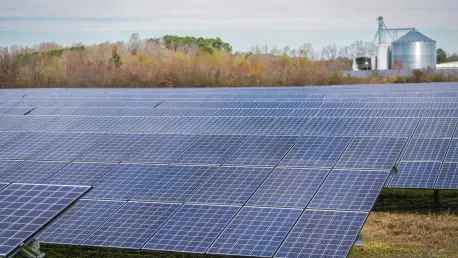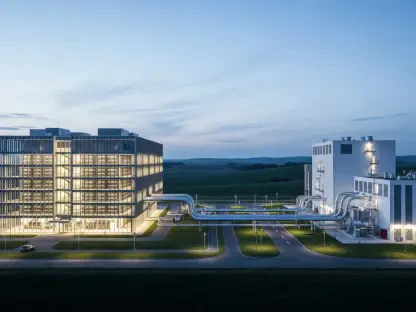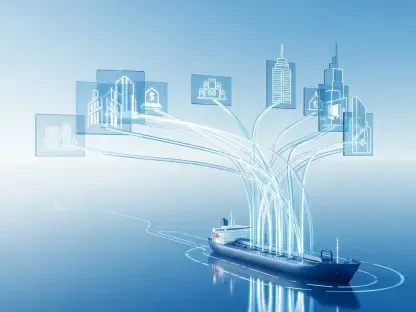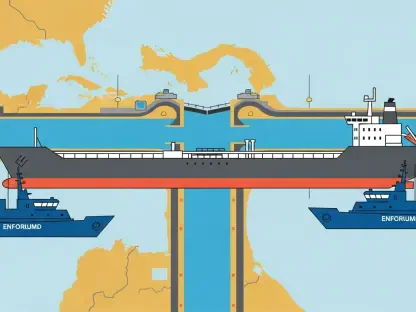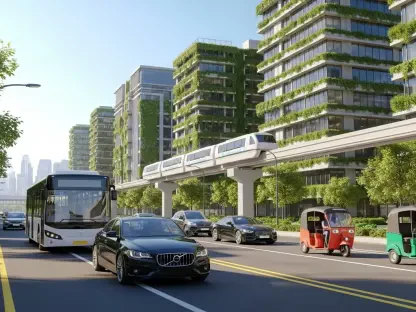The push for clean energy integration into the power grid has reached a critical juncture, with 107 state lawmakers from the National Caucus of Environmental Legislators urging PJM Interconnection, the largest grid operator in the United States, to act with urgency. Serving over 65 million people across 13 states and Washington, D.C., PJM holds a pivotal role in shaping the future of energy reliability and sustainability. These lawmakers are advocating for accelerated integration of renewable energy projects to address looming power shortages and to ensure that developers can meet stringent federal tax credit deadlines. This challenge is not just about meeting technical requirements; it weaves together energy policy, economic incentives, and the pressing need for grid stability. As demand for electricity surges and fossil fuel plants retire, the stakes couldn’t be higher for PJM to balance immediate needs with long-term environmental goals, making this a defining moment for the regional operator and the communities it serves.
Grid Reliability Under Pressure
The warnings from PJM about potential power supply shortfalls have been ringing since early 2023, highlighting a growing crisis fueled by escalating demand, particularly from data centers. This surge in electricity needs, coupled with the phasing out of older fossil fuel plants, has created a precarious situation for grid reliability across the region. Lawmakers argue that renewable energy sources, such as wind and solar, offer a viable and relatively swift solution to bridge these gaps. Unlike traditional power plants that may take years to build, many clean energy projects can be deployed in shorter timeframes, providing a critical buffer against blackouts or supply disruptions. Beyond just meeting demand, integrating renewables could also stabilize energy costs for consumers, offering a dual benefit of reliability and affordability at a time when both are under threat.
Beyond the immediate concern of power shortages, the broader implications of inaction are significant for the region’s energy landscape. If PJM fails to facilitate the rapid onboarding of clean energy projects, the risk of prolonged instability looms large, potentially impacting everything from household electricity bills to industrial operations. Lawmakers emphasize that the technology and resources for renewable integration are already available; what’s lacking is the speed and coordination needed to implement them effectively. The focus on renewables isn’t merely about meeting environmental targets but is rooted in a pragmatic need to ensure the grid can handle modern demands. This situation underscores the urgency for PJM to prioritize these projects, not as a future ideal, but as a present-day necessity to safeguard the energy security of millions who depend on a stable power supply.
Racing Against Tax Credit Timelines
Federal tax credits for renewable energy projects, enshrined in recent legislation, come with tight deadlines that add another layer of urgency to PJM’s role. Developers must begin construction by July 4, 2026, and ensure projects are operational by December 31, 2030, with an earlier fallback option of 2028 if the initial construction deadline is missed. These incentives are crucial for making projects financially feasible, directly benefiting developers while also translating into lower costs for ratepayers. Missing these windows could result in billions of dollars in lost savings and stalled progress toward cleaner energy systems, a consequence that lawmakers are determined to avoid by pressing PJM for faster action.
The economic ripple effects of failing to meet these deadlines extend far beyond individual projects. For states under PJM’s jurisdiction, the tax credits represent a rare opportunity to boost local economies through job creation and infrastructure investment tied to renewable energy development. Lawmakers argue that PJM must align its processes to prioritize projects that qualify for these incentives, ensuring that bureaucratic delays do not undermine federal policy goals. The clock is ticking, and the pressure is on for the grid operator to streamline its approach, recognizing that each delayed project represents not just a missed deadline but a missed chance to advance both environmental and economic priorities for the region’s future.
Navigating Interconnection Challenges
One of the most significant barriers to integrating clean energy lies in PJM’s interconnection process, the mechanism through which new projects are reviewed and connected to the grid. Delays in this process are widespread, stemming from slow review cycles, inefficiencies in network upgrades managed by transmission owners, and persistent permitting hurdles at both state and federal levels. These bottlenecks have created a backlog that frustrates developers and threatens to derail projects critical to meeting energy demands. Lawmakers are calling for greater transparency in how PJM handles these interconnections, alongside improved collaboration with state and federal agencies to cut through red tape and accelerate timelines.
Addressing these operational challenges requires more than just incremental adjustments; it demands a fundamental overhaul of how PJM manages its queue of pending projects. Despite some progress in reducing backlogs, the pace remains insufficient to match the urgency of current needs. Lawmakers suggest specific reforms, such as simplifying interconnection rules and prioritizing projects that can be completed swiftly. The frustration is palpable among stakeholders who see these delays as a preventable obstacle to cleaner, more reliable energy. Without decisive action, the risk grows that promising renewable initiatives will remain stuck in limbo, unable to contribute to the grid or capitalize on available financial incentives, further compounding the region’s energy challenges.
Bridging State and Federal Divides
A deeper tension complicates PJM’s path forward, as state-level ambitions for clean energy often clash with federal policies perceived as obstructive. Lawmakers have pointed to actions by the Trump administration and Congress that hinder renewable energy growth, despite widespread acknowledgment of the need for additional power capacity. Maryland Delegate Lorig Charkoudian, a leading voice in the appeal to PJM, has highlighted this disconnect, noting that federal barriers undermine state efforts to transition to sustainable energy. This policy conflict creates a challenging environment for PJM, caught between competing priorities while striving to maintain grid stability.
Compounding this issue is growing dissatisfaction with PJM’s governance and stakeholder engagement processes. Some state leaders, including Charkoudian, have raised the possibility of states like Maryland exploring an exit from the regional transmission organization if meaningful reforms are not implemented. This sentiment reflects a broader frustration with PJM’s leadership and decision-making framework, which many argue fails to adequately represent state interests. The push for change is not just about policy alignment but also about ensuring that states have a stronger voice in shaping the energy future of their communities, particularly when federal support appears lacking.
Driving Reforms for a Sustainable Future
State lawmakers and governors are not standing idly by; they are demanding a formal role in PJM’s governance structure and advocating for targeted reforms to expedite clean energy integration. Proposals include adopting “energy only” interconnection rules, refiling plans at the Federal Energy Regulatory Commission for easier capacity rights transfers, and fully implementing queue reforms mandated in recent years. These measures aim to dismantle systemic delays and ensure that renewable projects can move forward without unnecessary hindrance. The call for accountability is clear, as stakeholders grow weary of promises without tangible results.
While PJM has reported progress, such as reducing its interconnection queue and leveraging advanced planning tools, many argue that the speed of these changes falls short of what’s required. The impatience among state leaders signals a broader shift toward localized control over energy policy, with some even contemplating legislative studies on the benefits of leaving PJM altogether. This dynamic underscores the need for the grid operator to act decisively, aligning its operations with the urgent clean energy goals of the states it serves. The path forward hinges on collaboration and reform, ensuring that technical advancements and policy priorities work in tandem to secure a reliable, sustainable energy grid.
Reflecting on a Path Forward
Looking back, the concerted effort by 107 state lawmakers to push PJM Interconnection toward faster clean energy integration marked a critical moment in the region’s energy history. Their urgent plea, driven by the dual imperatives of grid reliability and federal tax credit deadlines, underscored the complex interplay of technical challenges and policy constraints that defined the struggle. The operational delays, governance frustrations, and state-federal tensions that emerged during this period highlighted the depth of the challenge faced by PJM. Yet, they also paved the way for a renewed focus on actionable solutions. Moving forward, the emphasis shifted to implementing streamlined interconnection processes, fostering greater state involvement in decision-making, and advocating for supportive federal policies. These steps, built on the momentum of past advocacy, offered a roadmap for PJM to not only address immediate power needs but also to secure long-term economic and environmental benefits for the millions who relied on its grid.
